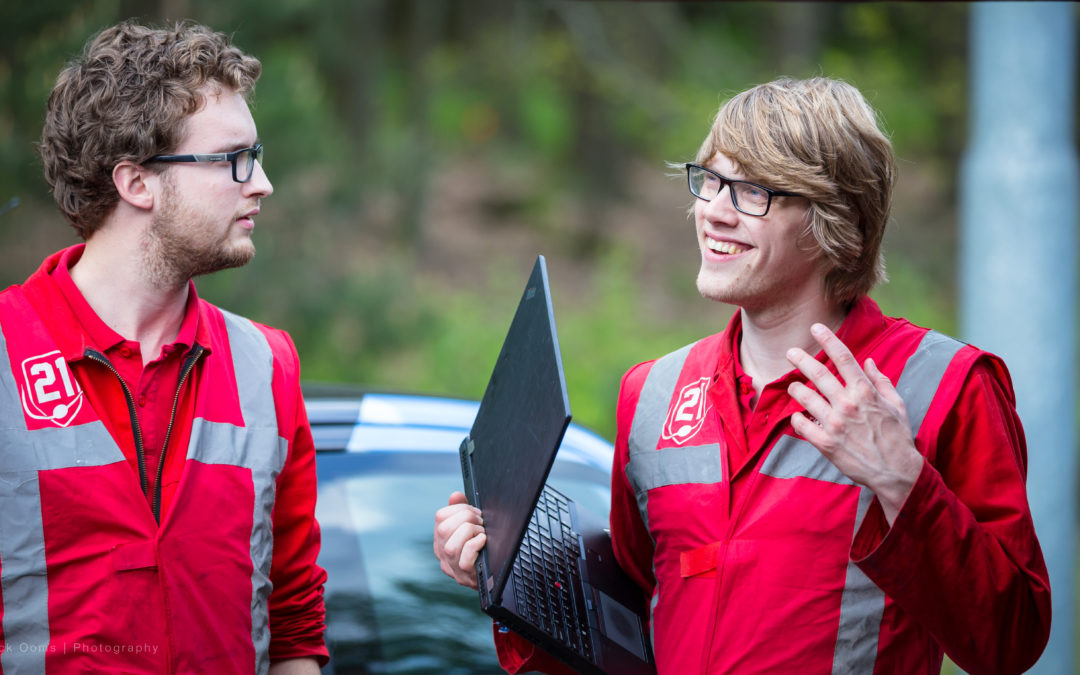NL/ENG
Today is wisdom Wednesday! The day where we enlighten you a little more on the technical aspects of our project and how we challenge the future of urban mobility with these technological innovations. This week: data-acquisition. During the race it is very important to monitor how RED Shift is doing. But how do you do that? Our data-acquisition engineer Aart explains!
What is DAQ exactly?
Data-acquisition, or DAQ for short, performs different tests throughout the year together with the Mechanical and Structural Engineering teams. We do this to get to know all there is about our RED Shift and her behavior. These tests also help us assess whether RED Shift is indeed safe and that she will not fall apart halfway through the outback. But not only the Mechanical and Structural Engineering teams contribute to the car. What about all the electrical systems built by our Electrical Engineers? DAQ is responsible for writing a program which allows all these systems to communicate with the solar car.
Heaps of data
Most of the electronics and electrical systems in RED Shift have been custom designed and made to our specific wishes and demands. It is therefore important that we keep a close eye on them. For instance, it is critical that the motor do not overheat. Also it is important to make sure that the steering wheel maintains all its functions, and that the driver does not experience any problems with this. Besides that, we also monitor how much energy is generated by our solar panel and how this could influence our strategists strategy. Summarized; we need to read, save and process a heap of data!
Hi, I’m CELINE!
Previously we have talked about the CAN-communication. This is an information system which allows all electrical components to report information about their performance. This data is then gathered by CELINE. She forms a Wi-Fi hotspot to which DAQ then connects.
Although many people automatically link Wi-Fi to wireless internet, Wi-Fi is actually nothing else than a cable through the air which is able to send out different signals! This is why CELINE doesn´t have internet, but forms a Local Area Network(LAN) together with DAQ. It is through this mini-internet that we communicate all CAN-communication with the support vehicle for analysis.
Where doe we go from here?
DAQ has a server in one of the support vehicles which receives all this data. The sent information is unpacked and the data is processed and stored. Some of this data then finds its way on to our strategist.
To view all the electronics within RED Shift live, DAQ creates an interface which shows the most recent data. This data can be visualized with either graphs or tables. Besides those we use warning lights to make sure that critical data receives follow-up as soon as possible.
DAQ, new and improved!
DAQ and CELINE have been together for quite a while now. CELINE has been around for several editions and data-acquisition even longer. This year we decided to rewrite the complete DAQ program to be able to add new functionalities faster. To replay a test for example. But also, it is much easier to draw conclusions from a well-managed interface than to have to dig around in a stack of raw data. The DAQ program has been successfully rewritten which means that DAQ is ready to race!
Wisdom Wednesday recap:
- Data-acquisition gathers all the data generated by the solar can through communication with the CAN-communication.
- This data might have an influence on our race strategy
- Our DAQ program has been completely rewritten this edition to allow for even better communication with our CELINE
Curious about the progress of our team and which technical aspect will be explained next? Subscribe to our newsletter Red News, and follow us on Facebook, LinkedIn, Twitter and Instagram.


Recent Comments